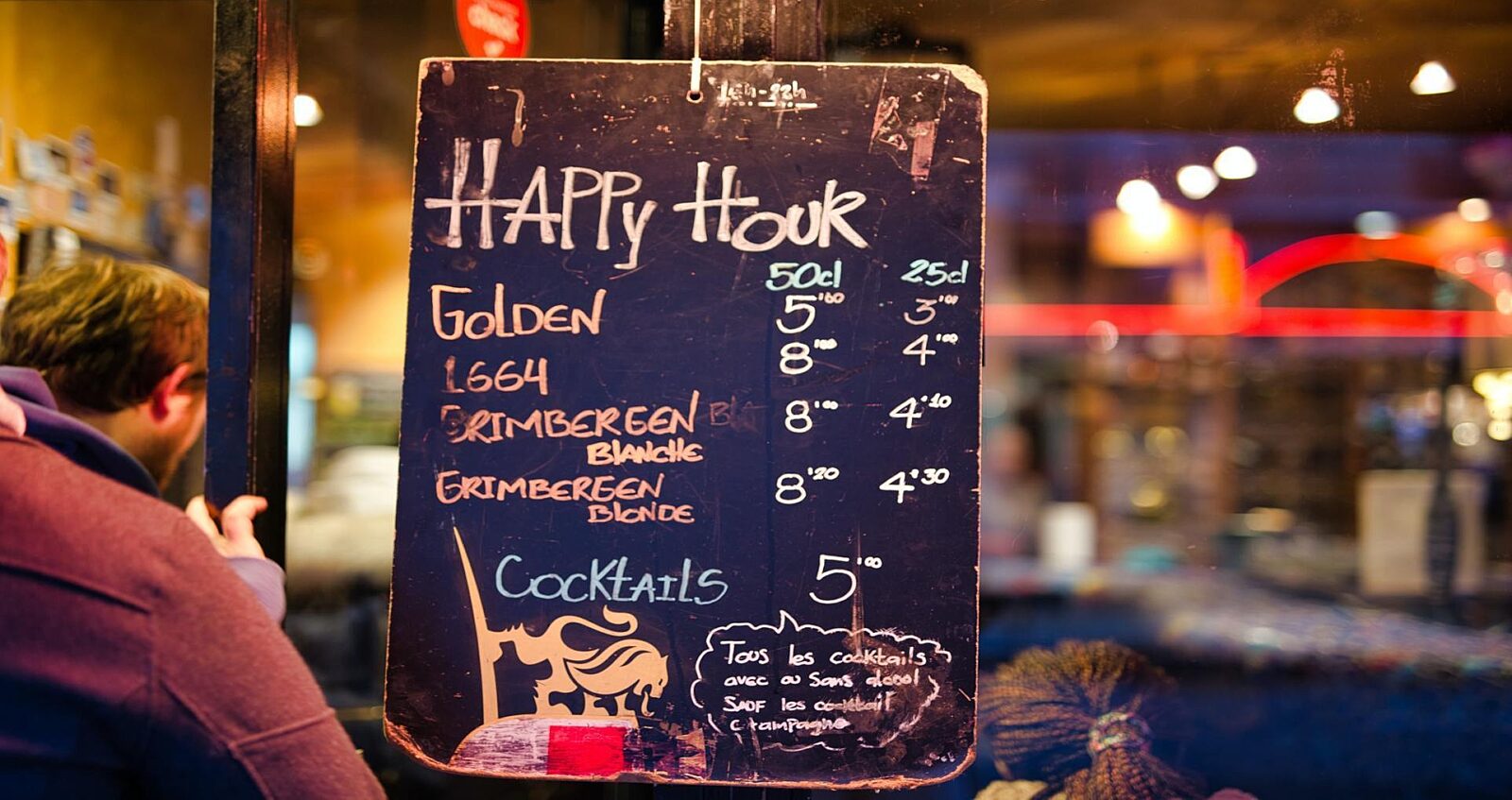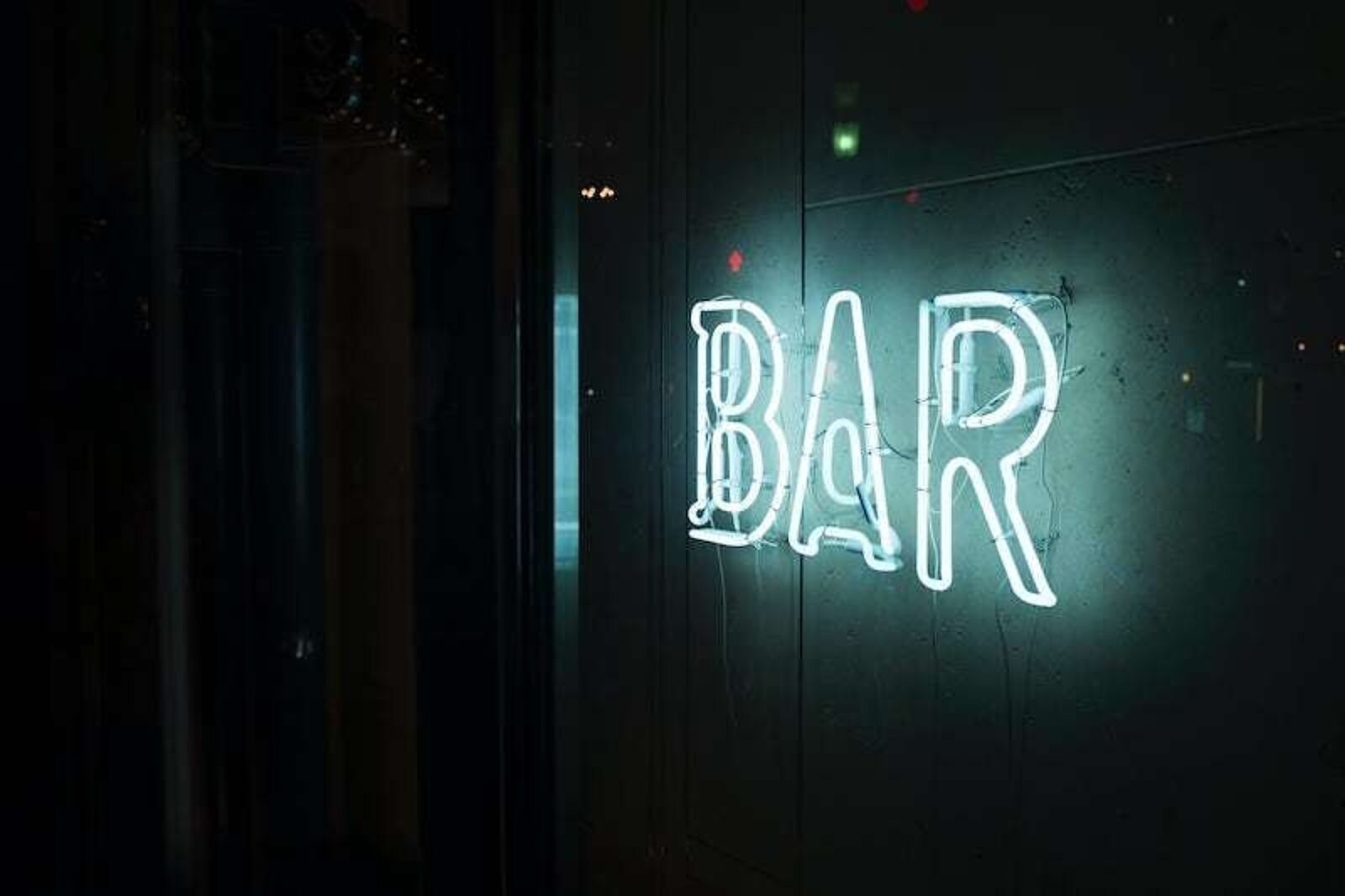
What is Happy Hour? How Restaurant Can Drives Happy Hour Sales
Happy hour is a great way to bring in new customers and increase sales. Here's how to best optimize your restaurant's happy hour.

Caroline PriceAuthor
Happy hour is a popular social event typically held in bars and restaurants, where drinks and appetizers are offered at discounted prices during specific hours. Originating from the idea of providing a cheerful and affordable gathering time, happy hour has become a staple in the hospitality industry, attracting patrons looking to unwind after work or catch up with friends.
For establishments that offer it, happy hour is a highly profitable tool. It draws in crowds during slower periods, increases overall sales, and enhances customer loyalty. By providing enticing deals, restaurants and bars can boost their revenue while creating a lively and welcoming atmosphere that encourages repeat business.
Menu Engineering Course
Take this course to make the most of your menu. Learn about menu psychology and design, managing your menu online, and adapting your menu to increase sales.

What is happy hour?
Happy hour is a marketing strategy done by many restaurants and bars, where food and drinks are sold at reduced prices for a certain period of the day — usually a period of the day that’s slow and light on customers. Happy hour is a great way to bring in more customers, boost your sales, and build your community presence – turning your bar or restaurant into the go-to post-work hangout spot for those who work 9-5.
And while happy hours today are ubiquitous, where did the term happy hour come from? Who invented happy hour, and how did it become as popular as it is today?
The history of happy hours stems from U.S. Naval ships in the 1920s: sailors coined the phrase to describe their time of fun and relaxation post workday. During prohibition, the phrase was picked up by the American public and was often used to describe outlawed get-togethers. After that, the term stuck, and now, you’ll be able to find happy hours in most restaurants and bars in the U.S.
When is happy hour?
While there isn’t one set time, typically, happy hour is between 4 - 8 PM, Mondays through Fridays. This fills the time before dinner where a restaurant might have a lull in activity, and also conveniently lines up with the time when most people are leaving work for the day.
How Long is Happy Hour?
Happy hour can last anywhere from one hour, up to an entire evening. Some restaurants do happy hours every night for a few hours, while others dedicate a night, like “thirsty Thursday”, to discounted drinks and appetizers.
What Happens During Happy Hour?
Happy hour is a designated time when bars and restaurants offer various incentives to attract customers. Here’s what typically happens:
Discounts on Drinks and Food
Customers enjoy significant discounts on a variety of drinks, including beers, wines, cocktails, and non-alcoholic beverages. Appetizers and small plates are also offered at reduced prices, encouraging patrons to try different menu items.
Special Promotions and Deals
Many establishments feature unique promotions such as:
Buy-One-Get-One-Free (BOGO) Offers: Buy one drink and get another free or at a discount.
Combo Deals: Bundled discounts on drinks and appetizers.
Theme Nights: Special discounts tailored to themes like Margarita Mondays or Wine Wednesdays.
Extended Time Frames
While traditional happy hours last one or two hours in the early evening, some places extend these hours to attract more customers, offering deals from late afternoon into early evening or even late night.
Variations in Offerings
Happy hour deals can vary widely based on location and type of establishment:
Urban vs. Suburban: Urban venues often have more competitive and diverse offerings, while suburban spots may focus on family-friendly options.
Casual vs. Upscale: Casual bars emphasize drink specials and hearty appetizers, whereas upscale restaurants offer gourmet small plates and signature cocktails.
Local Trends: Offers tailored to local tastes, featuring regional drinks and seasonal ingredients.
Benefits of Happy Hour for Restaurants
Happy hour offers numerous advantages for restaurants, making it a valuable strategy to boost business. Here are some key benefits:
Increased Foot Traffic
Happy hour attracts customers during off-peak hours, filling seats that might otherwise remain empty. This influx of patrons can create a lively atmosphere and draw in more passersby.
Higher Sales Volume
By offering discounted prices, restaurants can increase the volume of sales. Even with reduced prices, the higher quantity of items sold during happy hour can significantly boost overall revenue.
Enhanced Customer Loyalty
Regular happy hour promotions can build a loyal customer base. Patrons who enjoy the happy hour experience are more likely to return, not only during these special times but also for regular dining occasions.
Opportunity to Showcase Menu Items
Happy hour provides an excellent opportunity to highlight new or popular menu items. Offering small plates or signature drinks at a discount allows customers to sample a variety of options, potentially leading to full-price purchases on future visits.
Improved Brand Awareness
Consistent and well-promoted happy hour events can enhance a restaurant’s visibility and reputation. Engaging promotions and word-of-mouth referrals can attract new customers and increase brand recognition.
Increased Employee Morale
A bustling happy hour can boost staff morale. Busy periods can lead to higher tips and a more dynamic work environment, which can improve overall job satisfaction for employees.
Competitive Edge
In a competitive market, happy hour can set a restaurant apart from its rivals. Unique deals, creative promotions, and a welcoming atmosphere can make a restaurant the go-to spot for happy hour, giving it an edge over competitors.
By leveraging happy hour effectively, restaurants can enjoy increased traffic, higher sales, and greater customer loyalty, all of which contribute to long-term success.
Ideas for Marketing a Happy Hour and Maximizing Its Success
To make happy hour as successful as possible, strategic marketing and thoughtful execution are essential. Here are some ideas and tips to effectively market happy hour and ensure its success:
Utilize Social Media
Regular Posts: Share enticing photos and details of happy hour deals on platforms like Instagram, Facebook, and Twitter.
Stories and Live Videos: Use Instagram and Facebook Stories or live videos to showcase the happy hour atmosphere in real-time.
Hashtags and Tags: Use relevant hashtags and tag your location to increase visibility and engagement.
Email Marketing
Newsletters: Include happy hour details in your regular email newsletters to keep subscribers informed.
Exclusive Offers: Send special promotions or exclusive happy hour deals to your email list to encourage repeat visits.
Collaborate with Influencers
Local Influencers: Partner with local food and drink influencers to promote your happy hour. Invite them for a complimentary experience and encourage them to share their visit on social media.
Micro-Influencers: Engage with micro-influencers who have a dedicated local following for more authentic and targeted promotion.
In-House Promotion
Table Tents and Menus: Place table tents and highlight happy hour deals on menus to catch the attention of current patrons.
Staff Recommendations: Train your staff to inform customers about happy hour specials and encourage them to return.
Leverage Online Listings and Reviews
Listing Sites: Ensure your happy hour details are listed on popular platforms like Yelp, TripAdvisor, and local event calendars.
Encourage Reviews: Ask satisfied customers to leave positive reviews online, emphasizing their happy hour experience.
Host Themed Events
Special Themes: Create themed happy hour events, such as Taco Tuesdays or Thirsty Thursdays, to generate excitement and draw specific crowds.
Seasonal Promotions: Tie happy hour promotions to holidays, local events, or seasonal changes to keep offerings fresh and relevant.
Loyalty Programs and Incentives
Punch Cards or Apps: Implement a loyalty program where customers can earn rewards for frequent happy hour visits.
Referral Discounts: Offer discounts or freebies to customers who bring friends to happy hour.
Community Engagement
Local Partnerships: Partner with local businesses, such as nearby offices or gyms, to offer exclusive happy hour deals for their employees or members.
Charity Events: Host charity happy hours where a portion of the proceeds go to a local cause, attracting socially-conscious patrons.
Ensure a Great Experience
Ambiance and Service: Create a welcoming and enjoyable atmosphere with good music, comfortable seating, and excellent service.
Consistent Quality: Maintain high standards for food and drink quality, even during busy happy hour periods.
By implementing these marketing strategies and focusing on delivering an exceptional experience, restaurants can maximize the success of their happy hour, attracting new customers and encouraging repeat visits.
Happy Hour Roles and Safety for Bars and Restaurants
Ensuring that happy hour is both profitable and compliant involves careful planning and adherence to regulations. Here’s a guide on the key roles and safety measures for managing a successful and compliant happy hour:
Key Roles and Responsibilities
Management plays a crucial role in overseeing the entire operation, ensuring that all happy hour promotions comply with local laws and regulations. This includes providing comprehensive training for staff on responsible alcohol service, customer service, and emergency procedures. Managers also need to monitor inventory to prevent shortages and manage costs effectively. Additionally, they should regularly review customer feedback to make necessary improvements and address any issues promptly.
Bartenders are responsible for the responsible service of alcohol, which includes checking IDs and monitoring alcohol consumption. They must ensure that drinks are prepared to standard and presented attractively. Positive customer interaction is essential, as bartenders contribute significantly to creating a friendly and welcoming atmosphere.
Waitstaff must provide prompt and efficient service to ensure customers receive their orders quickly, especially during busy times. Accuracy in taking and delivering orders is crucial to minimize mistakes and enhance customer satisfaction. They should also be vigilant in monitoring signs of overconsumption and report any concerns to management.
Security personnel have the responsibility of checking IDs at the entrance to prevent underage drinking and managing the entry of patrons. They must monitor the crowd to ensure a safe environment and handle any disruptive behavior swiftly. Being prepared to act in case of emergencies, including administering first aid if necessary, is also part of their role.
Safety Measures and Compliance
Adhering to alcohol serving laws is essential, starting with strictly enforcing the legal drinking age by checking IDs of all patrons who appear underage. Establishments should implement and follow policies on serving limits to prevent overconsumption and intoxication, ensuring the safety of their patrons.
Maintaining high standards of health and safety involves keeping the establishment clean and adhering to hygiene regulations. It's also crucial to adhere to maximum occupancy limits to ensure a safe and comfortable environment. Emergency exits should be clearly marked and unobstructed at all times.
Staff training is vital for ensuring a safe happy hour environment. Training should include recognizing signs of intoxication and strategies for dealing with intoxicated patrons. Staff should also be equipped with conflict resolution techniques to handle difficult situations and be trained in basic first aid to manage minor injuries or medical emergencies.
For customer safety, promoting designated driver programs or ride-sharing services is essential to ensure patrons get home safely. Encouraging the consumption of water and food can help moderate the effects of alcohol, enhancing the overall safety of the event.
Regular compliance monitoring through audits ensures that the establishment adheres to all legal and safety regulations. Keeping an incident log helps maintain transparency and accountability, allowing the business to address any issues that arise promptly.
By defining clear roles and implementing stringent safety measures, bars and restaurants can create a safe, enjoyable, and profitable happy hour environment. Ensuring compliance with laws and regulations protects the business and its patrons, fostering a positive reputation and encouraging repeat business.
Keep Your Customers Happy
When planned correctly, happy hours can be a great way to increase sales and build customer loyalty. Check out this post for some more ways to optimize your menu, and start boosting your bar sales immediately.
Related Restaurant Resources
Is this article helpful?
DISCLAIMER: This information is provided for general informational purposes only, and publication does not constitute an endorsement. Toast does not warrant the accuracy or completeness of any information, text, graphics, links, or other items contained within this content. Toast does not guarantee you will achieve any specific results if you follow any advice herein. It may be advisable for you to consult with a professional such as a lawyer, accountant, or business advisor for advice specific to your situation.
Read More
Subscribe to On the Line
Sign up to get industry intel, advice, tools, and honest takes from real people tackling their restaurants’ greatest challenges.


